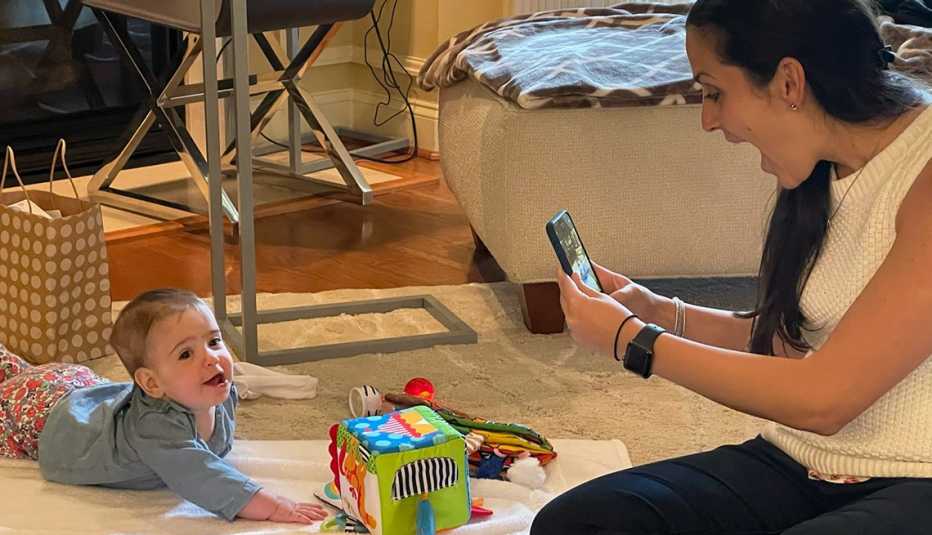Staying Fit


Your 15-month-old granddaughter decides to eat the world’s messiest chocolate cupcake, and you just know it would be the cutest video in the free world.
Or your 4-month-old grandson starts playing with his dog, and the photos would garner more likes on Facebook than everything you’ve ever posted combined.


AARP Membership— $12 for your first year when you sign up for Automatic Renewal
Get instant access to members-only products and hundreds of discounts, a free second membership, and a subscription to AARP the Magazine.
But you missed the shot. Your phone was still in your pocket or your pocketbook. Or you had it in your hand and got so flustered you couldn’t unlock it until after the moment had passed. The photo you did manage to take was out of focus or not centered or your grandkids had their eyes closed.
What can you do so you don’t miss any of these potential viral — or America’s Funniest Home Videos — moments?
Know your phone
Maximilian Franz, a full-time professional photographer and video producer in the Baltimore area, says his top tip is “clean your lens off as soon as you pull your phone out of your pocket. I see that all the time.” Franz, who has been doing corporate and event photography since 2018, after a 19-year career in newspapers, also says you should familiarize yourself with the movements of the phone.
To take a quick photo on an iPhone, you don’t need to enter your passcode or use biometrics. You can get to the camera by swiping left from the home screen even when it’s locked.
Many Android devices have similar features. Samsung Galaxy phones have a camera icon that you can touch at the bottom right corner of the screen. iPhones also have a camera icon in the same place.
Be ready for the shot
It may sound like a no-brainer, but to get that great candid shot, have your phone out of your pocket.
Franz says that’s the number 1 reason younger folks are able to capture those great moments while many older adults don’t. Younger people often seem to be attached to their devices, and taking photos is at the front of their minds.
“They always have their phones in their hands,” he says. “They’re always ready to take pictures.”



































































More on Home and Family
5 Fun Ways to Use Your Smartphone Photos
Use saved memories to create jigsaw puzzles, slideshowsHow to Create a Sentimental Slideshow
These apps make it easy to turn treasured photos and videos into keepsake mini-moviesHow to Easily Digitize Photos to Preserve Your Memories
DYI and save money. Use a professional to save time